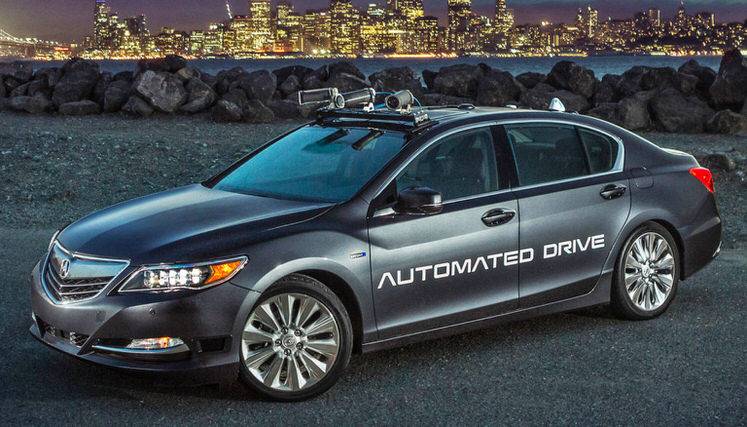The future of autonomous car design might feature beauties like the Mercedes F 015 Luxury in Motion and BMW iNext, but the current test cars on the road look like hideous mutations of future cars.
Acura wants to change that, with its new Automated Acura RLX Development Vehicle, successor to the first generation modified RLX.
See Also: Google paying lucky Arizonans just to drive around in self-driving car
The spinning LIDAR system found on the first-gen RLX has been replaced with three cameras, located on the front of the roof. Acura says the new sensors feature more powerful light detection and range, while also taking up a lot less room.
On top of the physical changes, Acura has also added improved radar, GPS, and a higher performance CPU and GPU to the autonomous car. That should give the car a lot more computing power, which is handy because Acura also added new intelligent software that apparently supports more complex testing scenarios.
Acura has been testing in California
Acura has been testing in the Bay Area for the past year, with help from its parent company Honda. The new RLX will take over as the primary test car for drivers at the GoMentum Station.
Honda is not one of the big names in the autonomous car world, but it has been quietly building its own system to compete with Google, Ford, and other big names.
We suspect, like most automakers, that it has its sights set on a 2020 release for a driverless vehicle. It already has a car with some of the autonomous features, the Honda Civic LX, which comes equipped with advanced-driver assistant systems and only costs $20,000.
General Motors has also begun testing its autonomous car in San Francisco, with two Chevy Bolt’s spotted on the streets using Cruise Automation’s self-driving system.


















